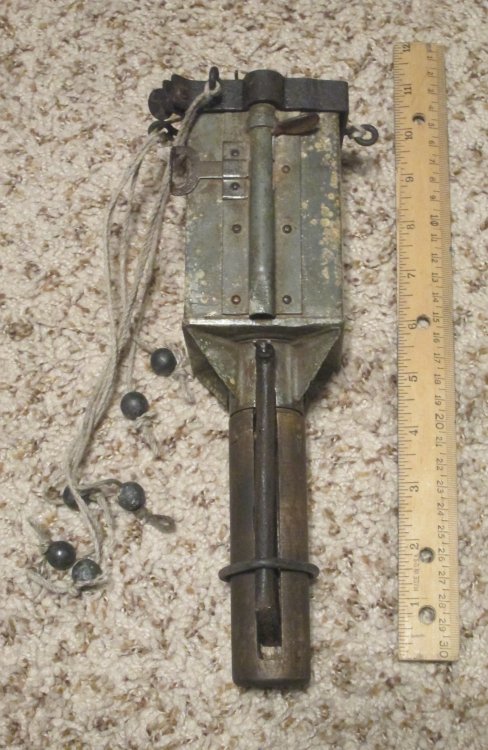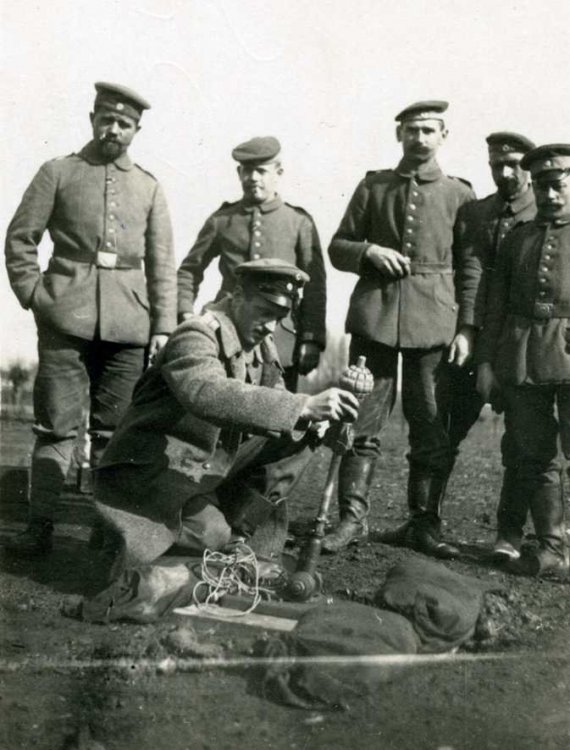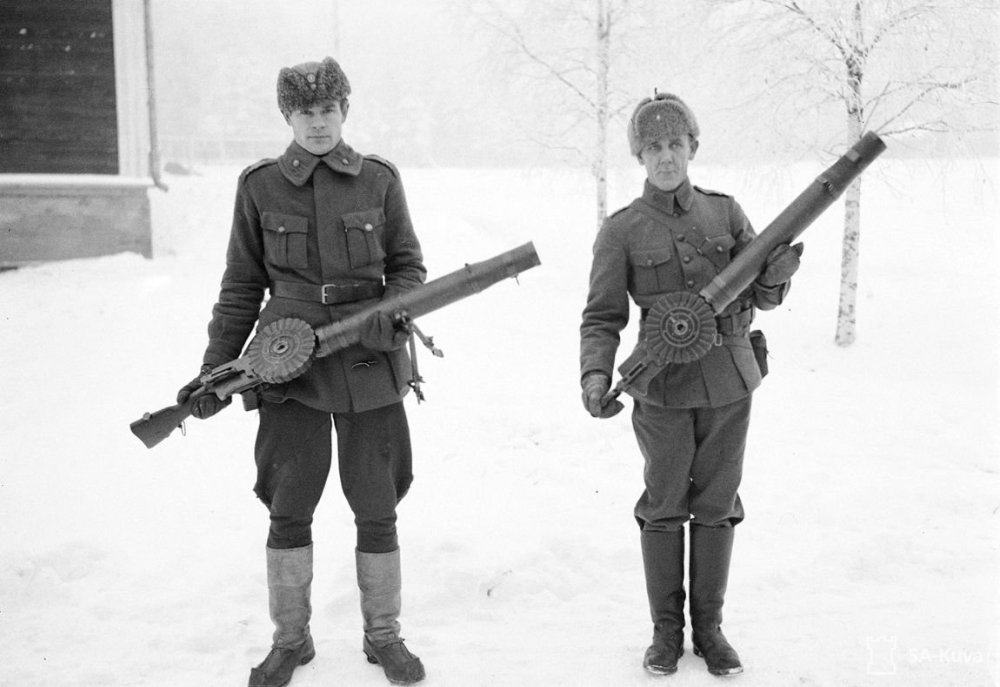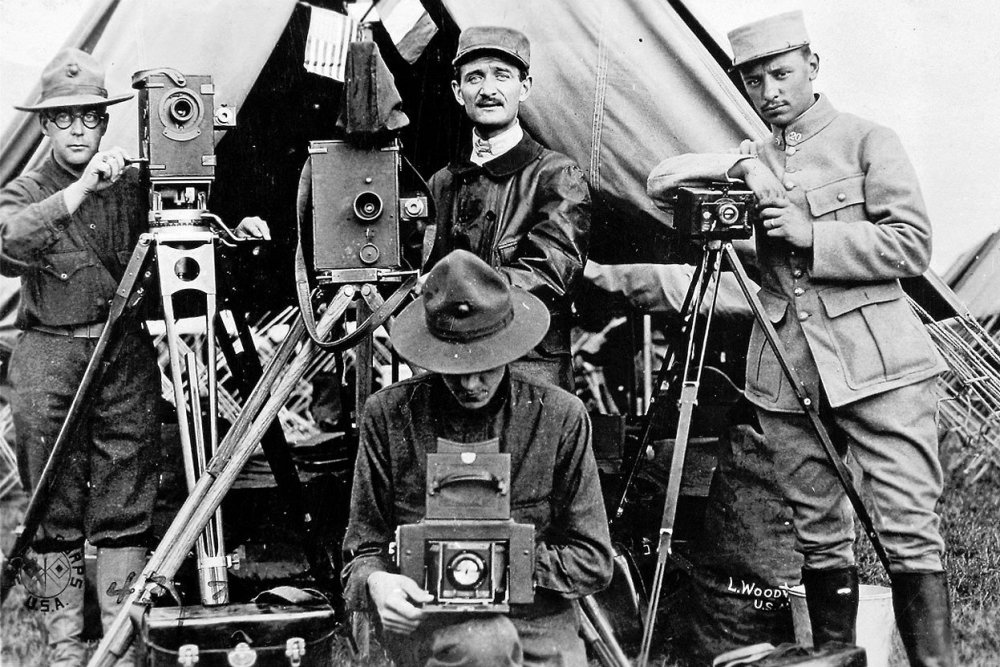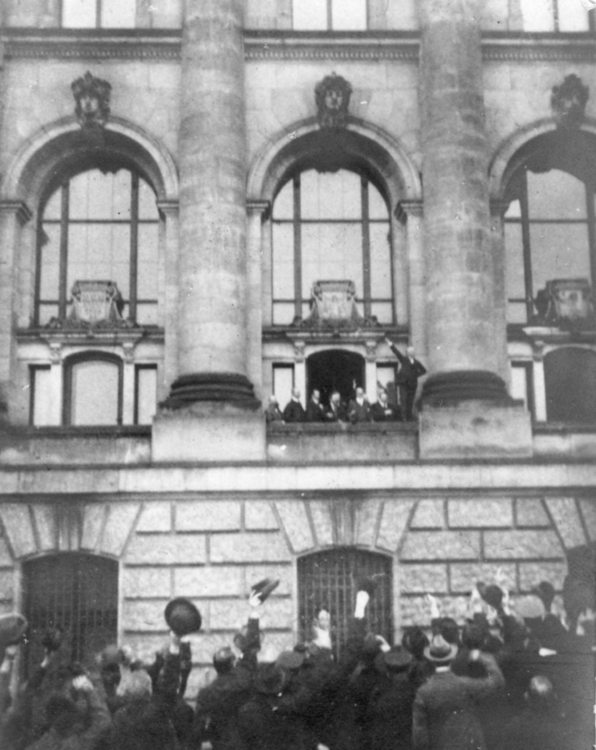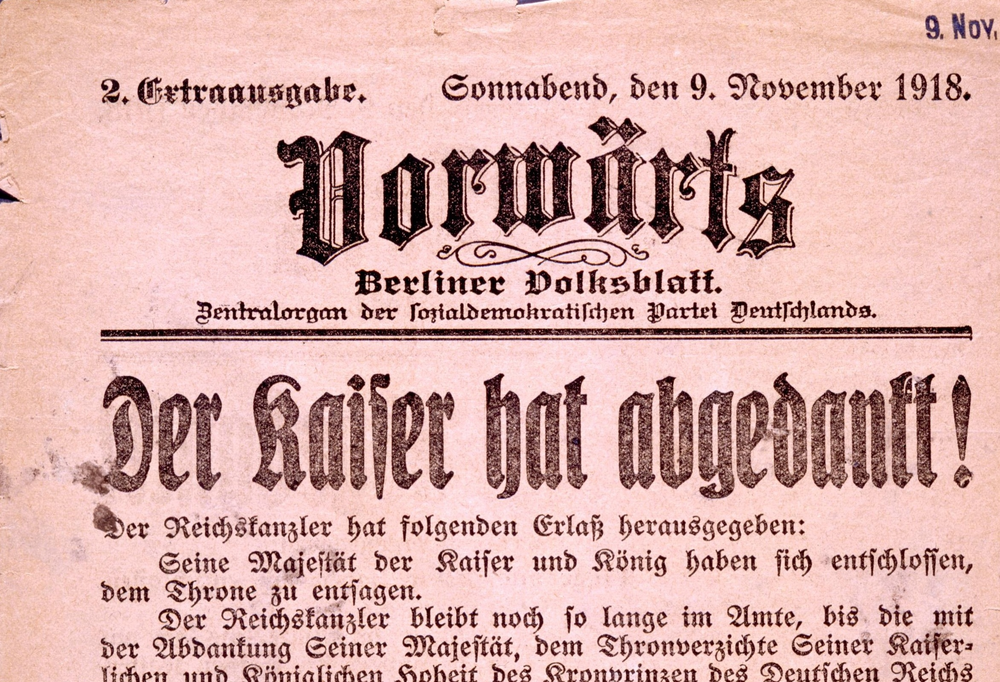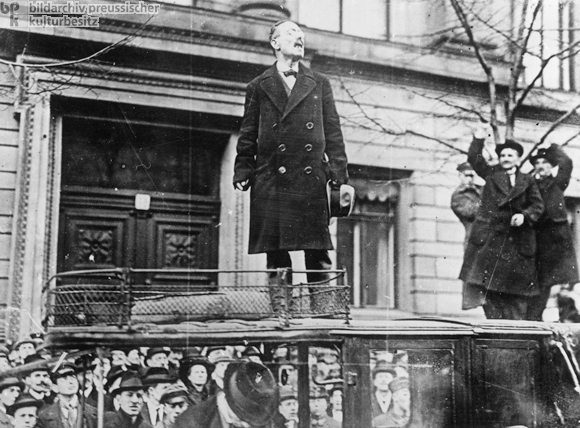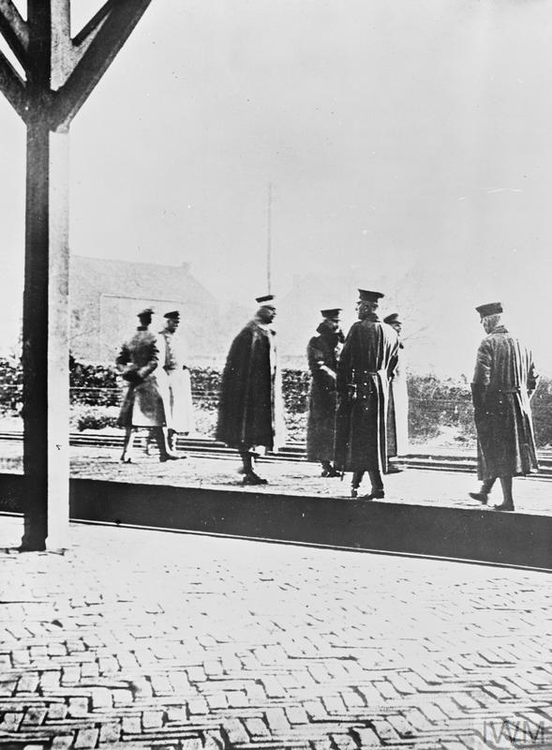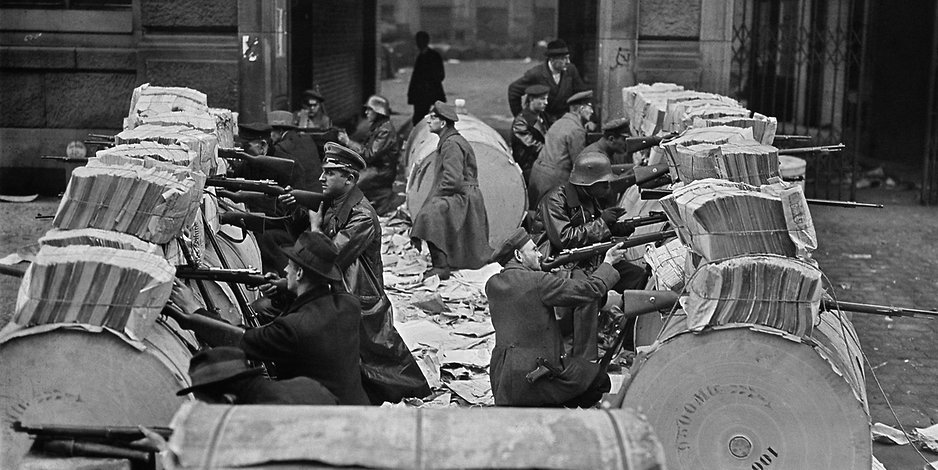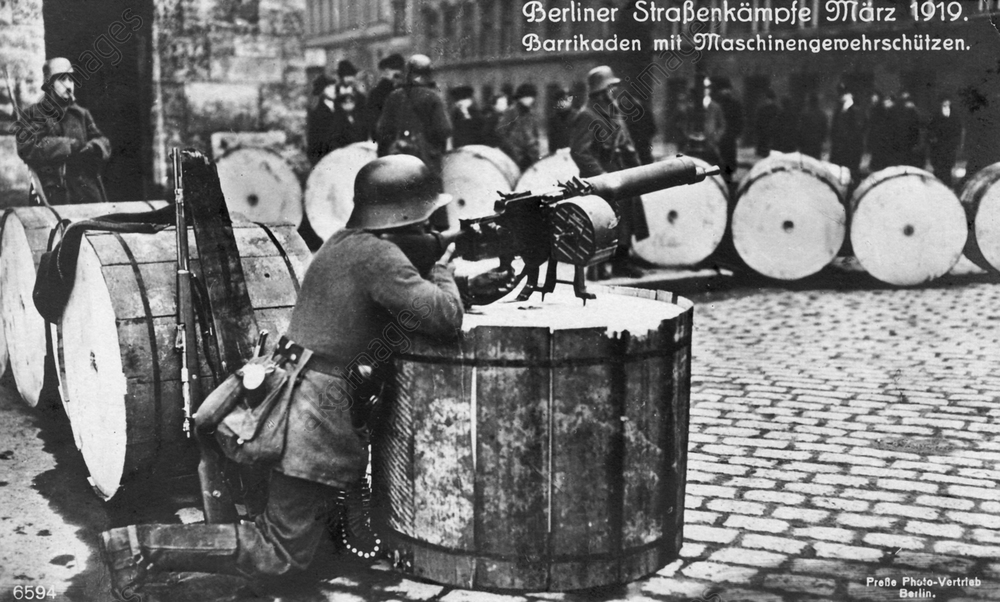Leaderboard
Popular Content
Showing content with the highest reputation on 01/07/20 in all areas
-
In researching the background of a friend's clock made by Junghans from WWII, I’ve seen mention of W146 and W246. Wondering what these designations mean. Welcome any help.2 points
-
Views of the interior of a Heinkel He 111, the cockpit with pilot, right, and observer left, behind them, either the air gunner/mechanic or the radio operator. Other views show the place of the wireless operator and the bomb racks. A further picture shows a He 111 of KG 26 over Norway in 1940, looks like 1H+DK are the markings?1 point
-
Here is an example of a WW1 Russian hand grenade, the M1912. This was a fairly complex design grenade, made from sheet metal and inside it had a fragmentation sleeve. The explosive used ammonal, which was water soluble, so these grenades and their fuses were packed into airtight containers until use. The fuse was in the handle and spring loaded, secured by a metal ring, similar to the Russian gas grenades of the time. There is a hook on the reverse to allow it to be attached to the soldiers belt. On the side are some stampings, as this is another dug example, they may be hard to read. The grenade also had several lead balls attached to strings at various points on the grenade to allow stability when thrown through the air. The handle and string are replacements, everything else is original.1 point
-
Here is a WW1 era Russian grenade, the M1914 Stender, named after a Russian Colonel named Stender supposedly. There is not much on the history of this grenade. However, it is made from sheet metal and soldered into place, it has a hollow metal tube handle which held the fuse. The explosive head portion had a detachable cap to allow for filling of the explosive, this cap was held in place by two metal prongs (broken off on this model). The handle also has a metal clip to attach to a belt or gear.1 point
-
Another WW1 era grenade, a Russian hexagonal type stick grenade. Thought to be also created by Colonel Stender, this grenade has a sheet metal casing for the explosive, inside the head and on the lid were small square pieces of metal to act as shrapnel when the grenade was exploded. The fuse was located in the handle, a string with a wooden toggle was secured inside a cap (missing from this example). This was a dug model and has been repainted, the handle is a replacement. The notches in the handle towards the end were to hold the cap in place. There are two types of this grenade, the one pictured below and another similar type with a much narrower head, about half the size of the one pictured. Sometimes these grenades have the fuse in the head of the grenade rather then in the handle, this can be identified by a hole in the detachable lid on top of the grenade.1 point
-
Hi Dow47, welcome to the forum, sorry about the delay in replying, have been working late in the shop setting up social distancing measures for reopening on Saturday. Regarding your clock the term W146 and W246 refer to the calibre or movement of the clock rather than the outer case. So W146 would mean the movement resonates at 146,000 vibrations per hour and the W246 resonates at 246,000 vibrations per hour. Hope this helps. Could you post some pictures of the clock?1 point
-
1 point
-
1 point
-
1 point
-
9. November 1918 - Novemberrevolution in Berlin Just a few weeks after Prinz Max von Baden had been nominated as Reichskanzler, in view of the impending defeat and catastrophe, he announced without due authorisation the Abdication of the Kaiser and charged Friedrich Ebert (SPD) with his offical duties. Ebert's party colleague, Philipp Scheidemann, who was to relieve him in February 1919, proclaimed from the balcony of the Reichstag the "Deutsche Republik". On that same day, Karl Liebknecht, one of the leaders of the left-wing revolutionary Spartakusbund proclaimed a "Freie Sozialistische Republik Deutschland" as a "Räterepublik". The Great War ended two days later at 11.00 on 11. November 1918 Philipp Scheidemann proclaims the Republic and Abdication of the Kaiser on 9. November 1918 Karl Liebknecht proclaims the Socialist Republic of Germany The Abdication, Kaiser Wilhelm at the Station of Amerongen, Holland In the following civil conflicts affecting many regions, the representatives of a socialist Räterepublik succumbed to the supporters of a parliamentary democracy. Two months later, Liebknecht, together with Rosa Luxemburg were executed on 15. January 1919 by solders of a Freikorps. In August 1919 the constitution of what was later known as the Weimar Republik was drawn up, so-called after the Nationalversammlung which was held in Weimar. November-January 1918 troops returning from the front. Communist agitators urge for a general strike and an armed uprising Demonstration in Unter den Linden Street fighting during the days of the Revolution, Berlin, 1918-19. Spartakists in Berlins "Zeitungsviertel" barricade themselves in against government troops. During the General Strike. Barricades of government troops and Freikorps in the Frankfurter Allee Street fighting continued. Berlin-Lichtenberg, Regierungstruppen with an English built tank Sozialistenfriedhof, Berlin-Friedrichsfelde Bavaria: The Freikorps Oberland helped to depose the red government in Munich1 point













